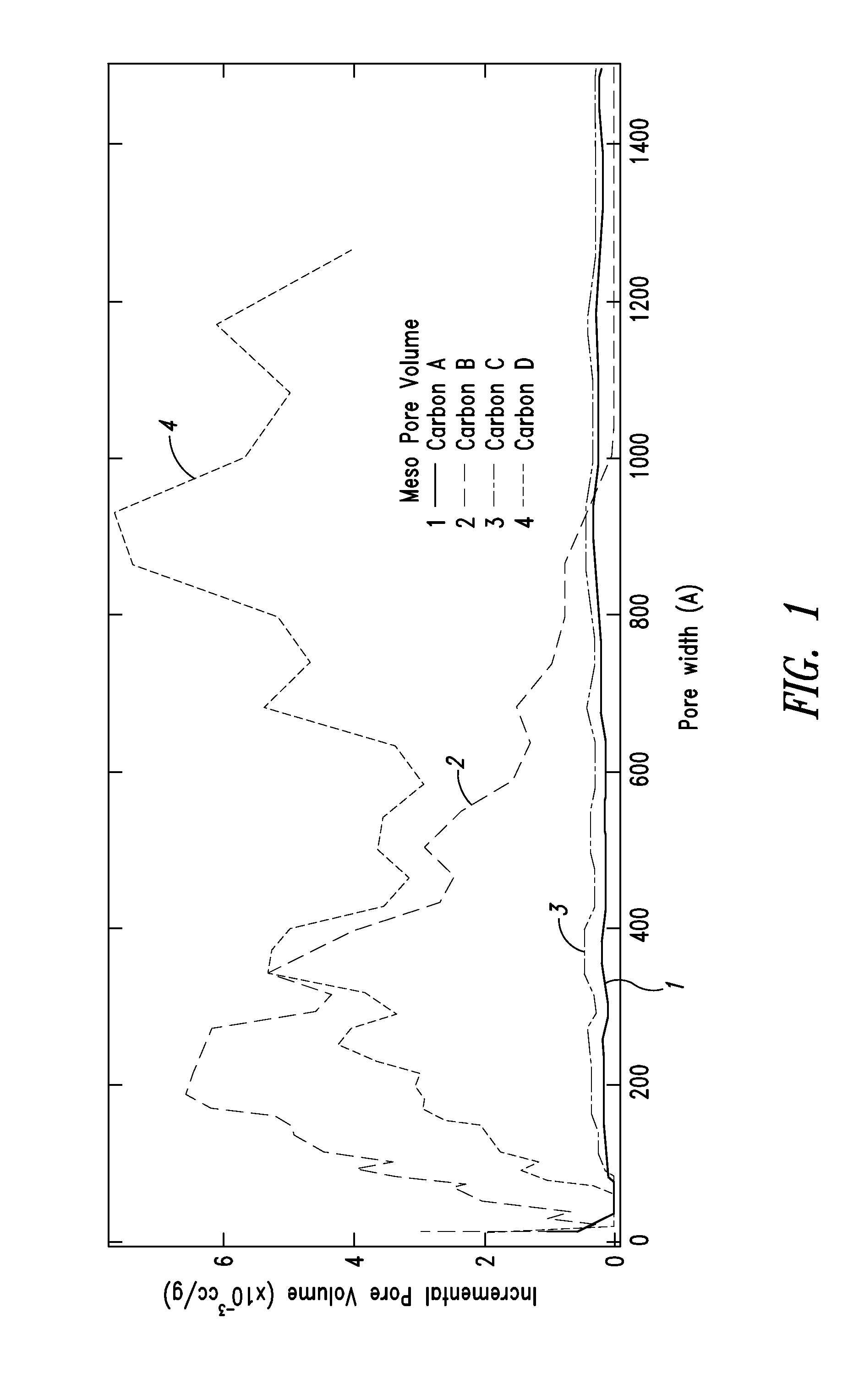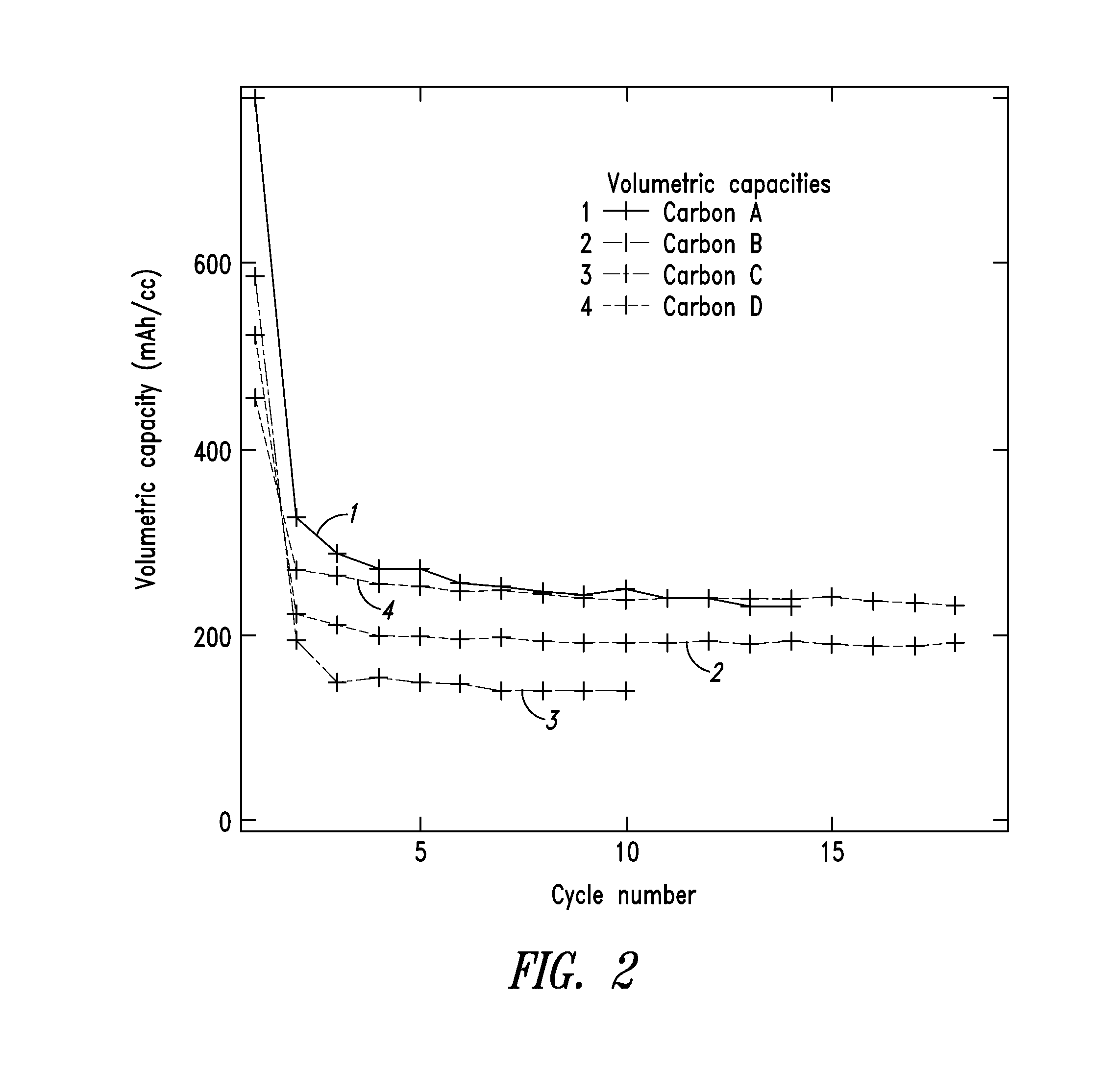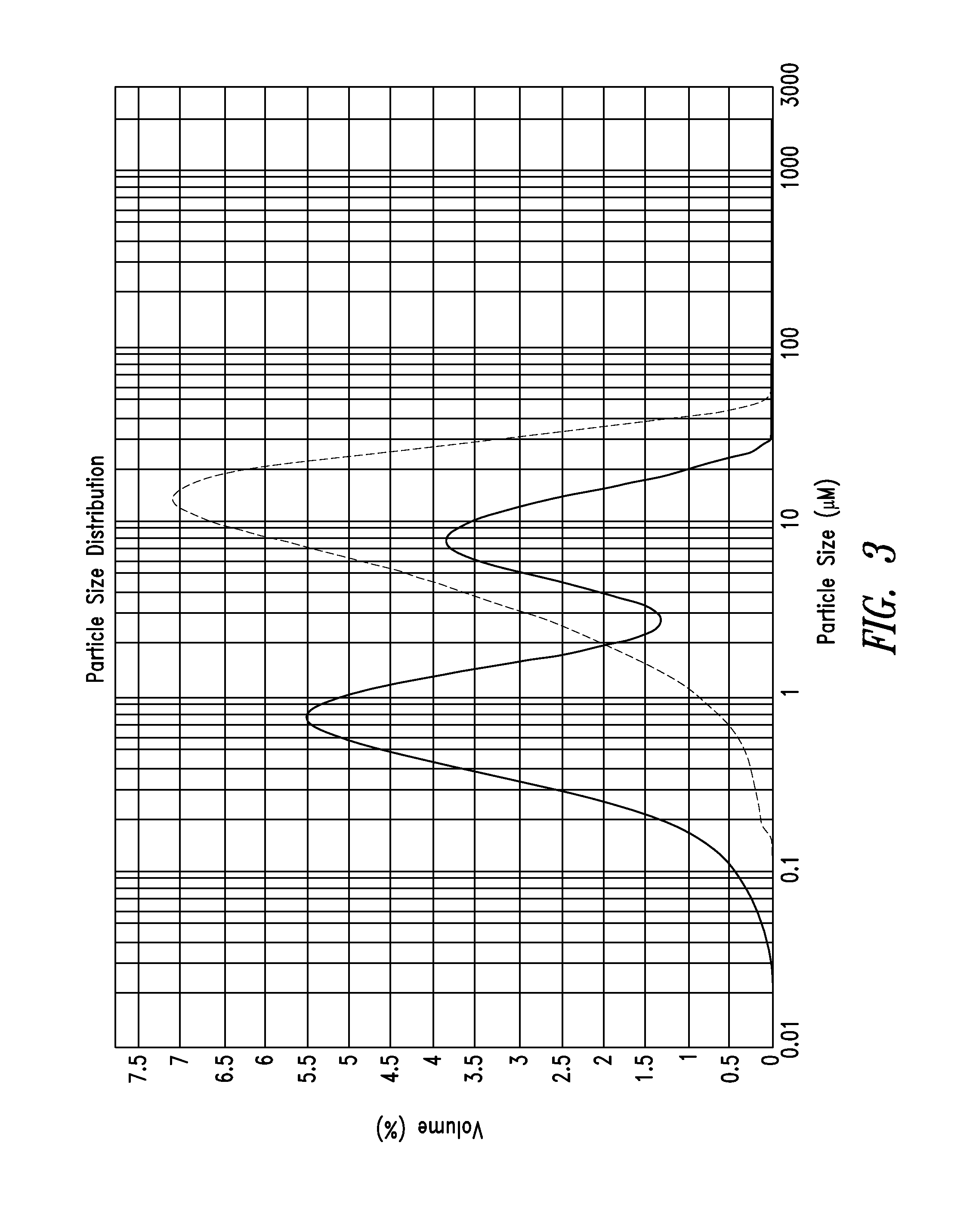Composite carbon materials comprising lithium alloying electrochemical modifiers
a technology of lithium alloying and carbon materials, applied in the field of composite carbon materials, can solve the problems of low power performance and limited capacity of graphitic anodes, insufficient current lead acid automobile batteries for next-generation all-electric and hybrid electric vehicles, and material fundamental limitations
- Summary
- Abstract
- Description
- Claims
- Application Information
AI Technical Summary
Benefits of technology
Problems solved by technology
Method used
Image
Examples
example 1
Monolith Preparation of Wet Polymer Gel
[0417]Polymer gels were prepared using the following general procedure. A polymer gel was prepared by polymerization of resorcinol and formaldehyde (0.5:1) in water and acetic acid (75:25) and ammonium acetate (RC=10, unless otherwise stated). The reaction mixture was placed at elevated temperature (incubation at 45° C. for about 6 h followed by incubation at 85° C. for about 24 h) to allow for gellation to create a polymer gel. Polymer gel particles were created from the polymer gel and passed through a 4750 micron mesh sieve. In certain embodiments the polymer is rinsed in a urea or polysaccharide solution. While not wishing to be bound by theory, it is believed such treatment may either impart surface functionality or alter the bulk structure of the carbon and improve the electrochemical characteristics of the carbon materials.
example 2
Alternative Monolith Preparation of Wet Polymer Gel
[0418]Alternatively to Example 1, polymer gels were also prepared using the following general procedure. A polymer gel was prepared by polymerization of urea and formaldehyde (1:1.6) in water (3.3:1 water:urea) and formic acid. The reaction mixture was stirred at room temperature until gellation to create a white polymer gel. Polymer gel particles were created through manually crushing.
[0419]The extent of crosslinking of the resin can be controlled through both the temperature and the time of curing. In addition, various amine containing compounds such as urea, melamine and ammonia can be used. One of ordinary skill in the art will understand that the ratio of aldehyde (e.g., formaldehyde) to solvent (e.g., water) and amine containing compound can be varied to obtain the desired extent of cross linking and nitrogen content.
example 3
Post-Gel Chemical Modification
[0420]A nitrogen containing hard carbon was synthesized using a resorcinol-formaldehyde gel mixture in a manner analogous to that described in Example 1. About 20 mL of polymer solution was obtained (prior to placing solution at elevated temperature and generating the polymer gel). The solution was then stored at 45° C. for about 5 h, followed by 24 h at 85° C. to fully induce cross-linking. The monolith gel was broken mechanically and milled to particle sizes below 100 microns. The gel particles were then soaked for 16 hours in a 30% saturated solution of urea (0.7:1 gel:urea and 1.09:1 gel:water) while stirring. After the excess liquid was decanted, the resulting wet polymer gel was allowed to dry for 48 hours at 85° C. in air then pyrolyzed by heating from room temperature to 1100° C. under nitrogen gas at a ramp rate of 10° C. per min to obtain a hard carbon containing the nitrogen electrochemical modifier.
[0421]In various embodiments of the above m...
PUM
| Property | Measurement | Unit |
|---|---|---|
| particle size | aaaaa | aaaaa |
| atomic numbers | aaaaa | aaaaa |
| atomic number | aaaaa | aaaaa |
Abstract
Description
Claims
Application Information
 Login to View More
Login to View More - R&D
- Intellectual Property
- Life Sciences
- Materials
- Tech Scout
- Unparalleled Data Quality
- Higher Quality Content
- 60% Fewer Hallucinations
Browse by: Latest US Patents, China's latest patents, Technical Efficacy Thesaurus, Application Domain, Technology Topic, Popular Technical Reports.
© 2025 PatSnap. All rights reserved.Legal|Privacy policy|Modern Slavery Act Transparency Statement|Sitemap|About US| Contact US: help@patsnap.com



